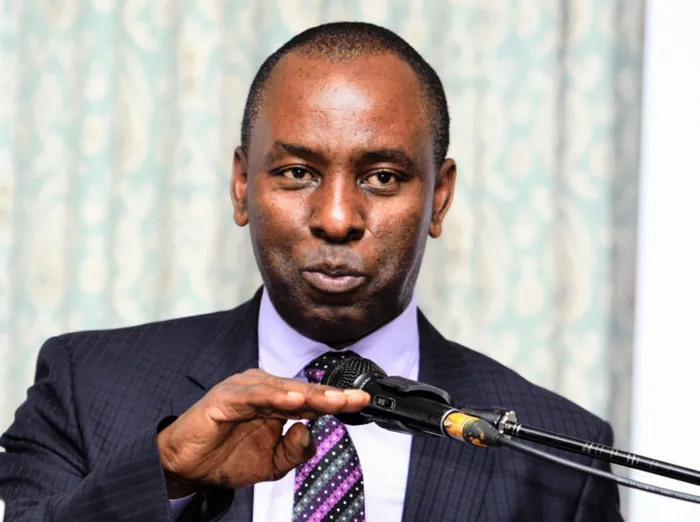Mining fatalities: Zwane is concerned

FILE : Minerals Resources Minister Mosebenzi Zwane visits Sibanye Gold's Driefontein operation as fatalities the mining industry near 50 with the company accounting for 10 of those .photo :Simphiwe Mbokazi 6 FILE : Minerals Resources Minister Mosebenzi Zwane visits Sibanye Gold's Driefontein operation as fatalities the mining industry near 50 with the company accounting for 10 of those .photo :Simphiwe Mbokazi 6
Johannesburg - Mineral Resources Minister Mosebenzi Zwane has visited Sibanye Gold to raise his concerns about increasing fatalities in the mining industry.
Read also: SA mines post lowest annual death toll
Zwane’s visit comes as figures showed that fatalities in the industry have reached 49 so far this year – with 10 of those coming from Sibanye.
Zwane said the industry needed to take measures to address the situation.
“This is a serious setback for the sector, which recorded its lowest ever fatalities in 2015,” Zwane said.
“We should not place value on profits over the lives of workers, while we are aware of the endeavours being made by the industry; we remain concerned about the safety performance of our mines.”
The mining industry has seen an increase in the number of fatalities underground, with the most chilling being the Lily mine incident in Barberton, Mpumalanga, where three miners have been trapped underground since February, following a cave-in that closed the entrance to the 13 levels underground.
Last month, trade union federation Cosatu said it would stage a protest at Lily mine to pressurise the company and the government to fast-track the process of bringing to the surface the bodies of the trapped miners and also to compensate the stranded miners, who are currently sitting at home.
Zwane said it was regrettable that the company, which had been the best safety performer in the gold sector last year, was now leading with fatalities this year.
Last year, the industry recorded 42 fatalities but since the beginning of this year, a total of 49 fatalities have been reported with Sibanye Gold accounting for 10 of those.
Trade union Solidarity spokesman Gideon du Plessis said mines safety was not negotiable.
“Mergers need to be taken and make sure that mine houses remain the priority for our economy,” Du Plessis said.
Sharp focus
Sibanye Gold has also come into sharp focus following its announcement last week that 1 700 jobs were at risk at its Cooke 4 gold and uranium mine near Westonaria.
Since 2012, the industry has cut about 47 000 jobs and observers believe it could shed another 32 000 this year, particularly in the gold, platinum and coal sectors, which have been battered by weak prices and rising costs.
In September 2014, the company said it would implement measures to return the operation to profitability.
However, despite intense monitoring and interventions by a joint management and labour committee over the last 17 months, Cooke 4 operations have continued to fall short of production targets and losses have accumulated against the rise in gold and platinum prices.
The National Union of Mineworkers (NUM), the biggest union in the industry said it was concerned about the looming job cuts. NUM spokesman Livhuwani Mammburu said the union welcomed Zwane’s interventions to avert what he called a jobs bloodbath.
“There is a miner that supports about 10 members of his family, so if he loses his job (that) means the family will lose his support. If the company anticipates retrenching 10 percent of its employees then the minister must intervene,” Mammburu said.
Meanwhile, platinum mining firms and South African trade unions should conclude wage talks quickly to avoid the protracted disputes that led to a five-month strike two years ago, Zwane said.
“I wish that everybody can negotiate with cool heads and avoid a strike and speedily resolve these negotiations,” he said. Talks between unions and the mining companies started last week.
The Association of Mineworkers and Construction Union, the biggest union in the sector, is demanding pay hikes of more than 50 percent, while a smaller union NUM is seeking a 20 percent increase.
The demands are well above inflation at 6.1 percent.
* With additional reporting by Reuters
BUSINESS REPORT